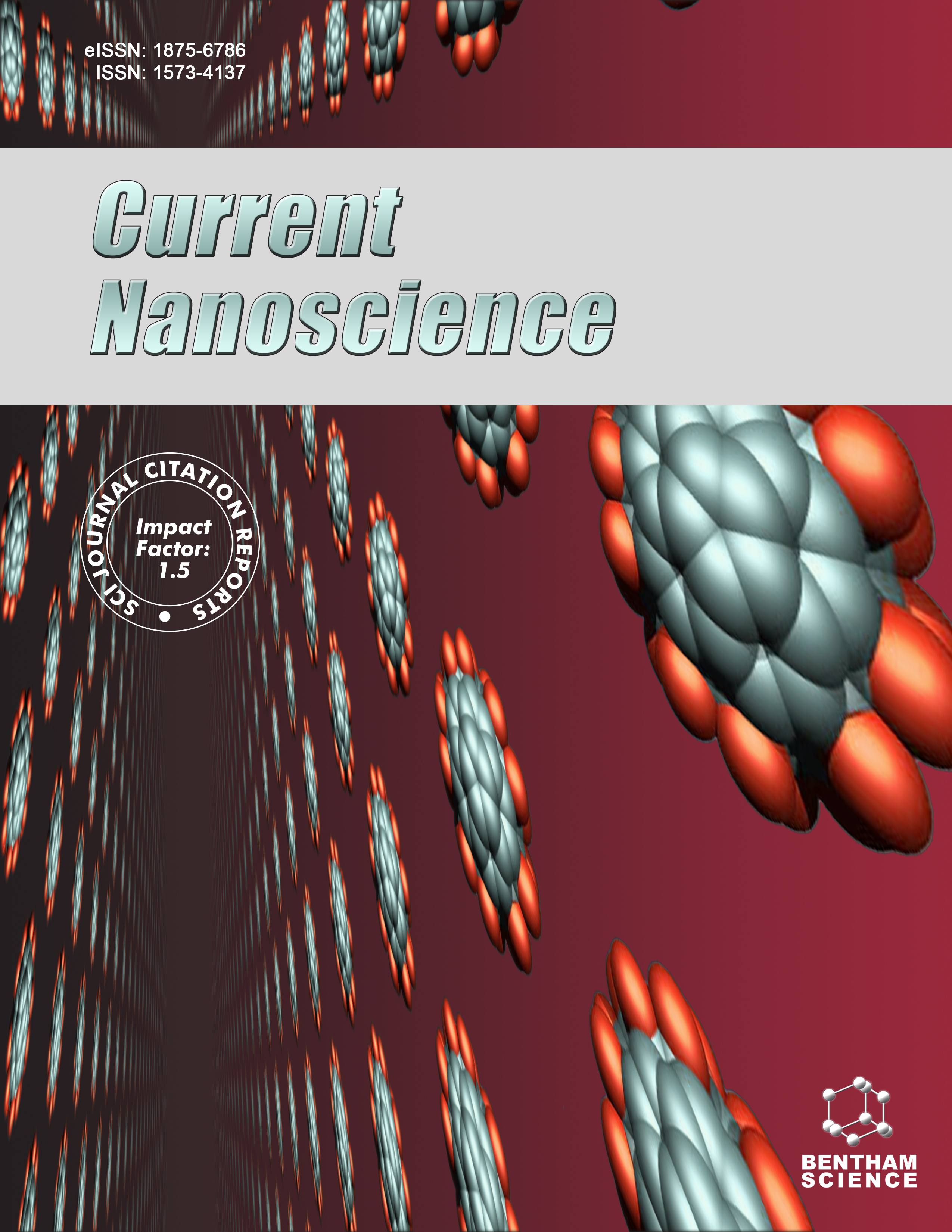- Home
- A-Z Publications
- Current Nanoscience
- Previous Issues
- Volume 15, Issue 1, 2019
Current Nanoscience - Volume 15, Issue 1, 2019
Volume 15, Issue 1, 2019
-
-
Review on the Formation of Anodic Metal Oxides and their Sensing Applications
More LessAuthors: AbdElazim M. Mebed, Alaa M. Abd-Elnaiem, Waleed A. El-Said and Tesleem B. AsafaAnodization of valve metal such as those of Al, Ti, and W among others have been extensively studied largely because of their unique morphology and extensive applications including gas and bio-sensing. While large volumes of published materials are available on the oxide of each metal, a concise review of previous works on these anodic oxides is timely. Herein, we present an overview of the formation process and applicat Read More
-
-
-
Nanoporous and Nanotubular Anodic Films on Iron Substrates. Synthesis and Structure
More LessAuthors: Arunas Jagminas and Vaclovas KlimasSelf-ordering nanostructured anodic films fabricated onto the surface of iron and ironbased alloys opened new horizons for their application in the recent energy harvesting and storage devices and catalysis. The anodic passivity of iron in the aqueous solutions is known since the beginning of the past century due to formation of extremely thin iron oxides or salt layer. Ten years ago the discovery of the formation of thick and s Read More
-
-
-
Electrochemical Formation of Self-Organized Nanotubular Oxide Layers on Niobium (Review)
More LessAuthors: Agnieszka Stróż, Tomasz Goryczka and Bożena ŁosiewiczBackground: This mini-review paper is focused on the anodic formation of selforganized nanotubular oxide layers on niobium as a nontoxic and allergy-free metallic biomaterial. Objective: The main purpose of the work was to outline the research activities being undertaken on the electrochemical modification of niobium to obtain its porous oxide with enhanced biocompatibility. Method: The effect of various parame Read More
-
-
-
Nanoporous Anodic Aluminum Oxide (NAAO) for Catalytic, Biosensing and Template Synthesis Applications (A Review)
More LessBackground: Nanoporous anodic aluminium oxide (NAAO) prepared by self-ordering anodization is fascinating and versatile nanostructured material predestined for a variety of applications. Objective: NAAO possesses remarkable properties with a highly ordered array of cylindrical pores which can be produced with tunable pore diameters and inter-pore spacing. For the past few decades, different approaches have been i Read More
-
-
-
A Review on Anodic Aluminum Oxide Methods for Fabrication of Nanostructures for Organic Solar Cells
More LessAuthors: Arkadiusz Jarosław Goszczak and Paweł P. CieleckiImplementation of nanostructures into the organic solar cell (OSC) architecture has a great influence on the device performance. Nanostructuring the active layer increases the interfacial area between donor and acceptor, which enhances the probability of exciton dissociation. Introduction of nanostructures into the active layer and nanopatterning of the electrodes leads to increased light absorption due to light scattering and Read More
-
-
-
Effect of Various Electrolyte Modifiers on Anodic Alumina (AAO) Growth and Morphology
More LessAuthors: Małgorzata Norek and Bogusław BudnerThe review summarizes the recent results on the influence of various modifiers on the anodic aluminum oxide (AAO) growth and morphological parameters. It is demonstrated that the modifiers can play an important role in the formation and self-ordering of AAO. The intrinsic function of a modifier seems to depend on other operating conditions, such as a type of electrolyte used, applied anodizing voltage, the chemical stru Read More
-
-
-
Electrodeposition of Iron-Group Alloys into Nanostructured Oxide Membranes: Synthetic Challenges and Properties
More LessAuthors: Henrikas Cesiulis, Natalia Tsytsaru, Elizabeth J. Podlaha, Deyang Li and Jordi SortBackground: Quasi-one dimensional nanostructures: nanowires, nanotubes, nanorods, nanobelts/nanoribbons and complex “nanowire-nanoparticle” composites have been synthesized over the years. These nanostructures are particularly appealing due to their specific properties defined by their high aspect ratio: two dimensions are in the nanoscale range and one dimension is in the microscale. Methods: One of t Read More
-
-
-
Stored Charge and its Influence on Properties of Anodic Alumina Films
More LessAuthors: Igor Vrublevsky, Katsiaryna Chernyakova, Renata Karpicz and Arunas JagminasIn porous and barrier-type anodic alumina films, the stored charge has electronic nature and it plays a significant role in the process of aluminum anodizing. The charge stored can modify the distribution of local field generated by a voltage applied and thus it can affect the oxide growth. The method for the investigation of thermally activated defects in anodic alumina films by reanodizing technique was also described. It was Read More
-
Volumes & issues
-
Volume 21 (2025)
-
Volume 20 (2024)
-
Volume 19 (2023)
-
Volume 18 (2022)
-
Volume 17 (2021)
-
Volume 16 (2020)
-
Volume 15 (2019)
-
Volume 14 (2018)
-
Volume 13 (2017)
-
Volume 12 (2016)
-
Volume 11 (2015)
-
Volume 10 (2014)
-
Volume 9 (2013)
-
Volume 8 (2012)
-
Volume 7 (2011)
-
Volume 6 (2010)
-
Volume 5 (2009)
-
Volume 4 (2008)
-
Volume 3 (2007)
-
Volume 2 (2006)
-
Volume 1 (2005)
Most Read This Month
Article
content/journals/cnano
Journal
10
5
false
en


